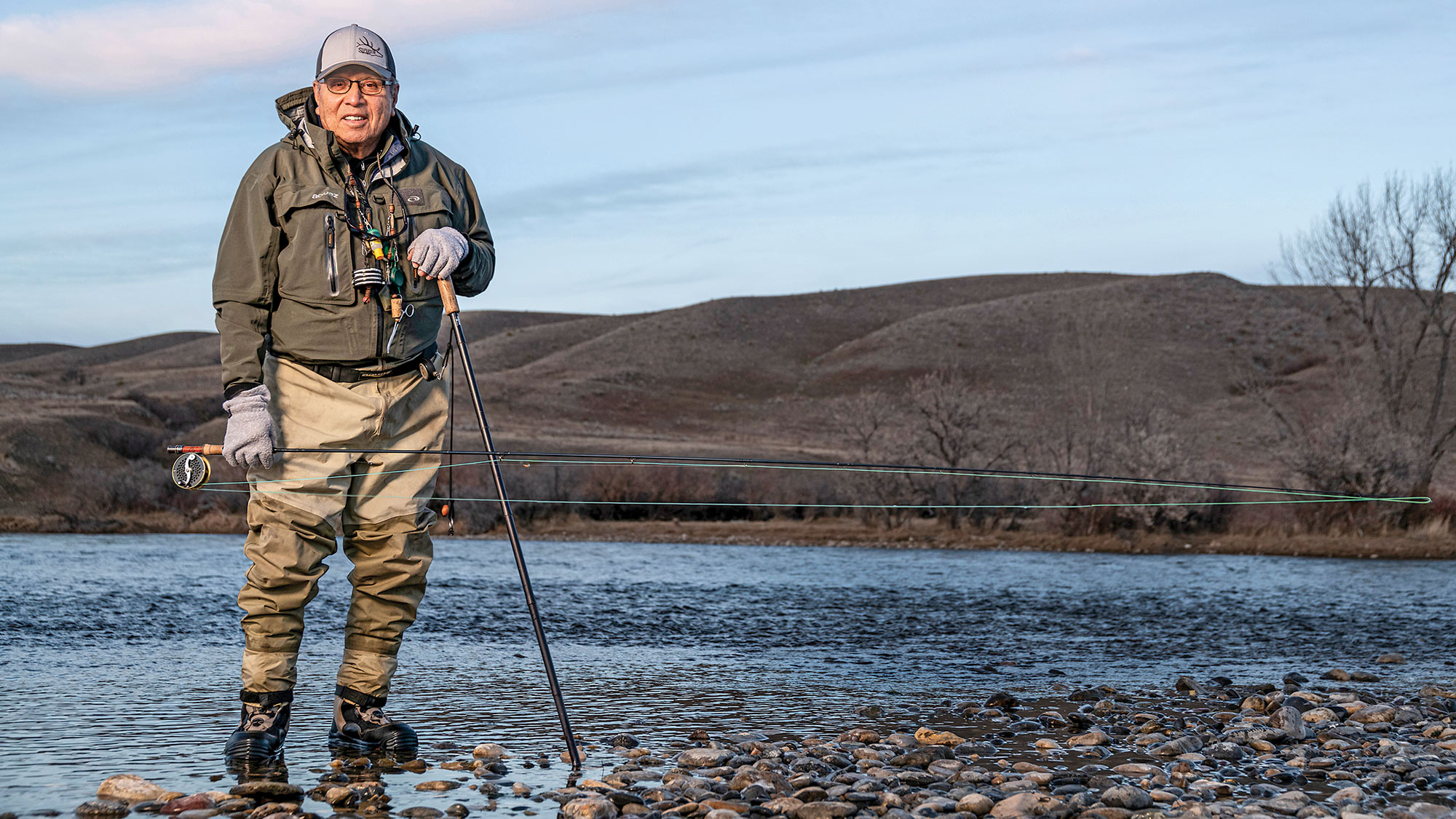PHIL GONZALES lucked into his first fishing rod. He grew up near a big bend in the Yellowstone River in Huntley, Montana, about 15 miles east of Billings. To keep the river from washing over its banks and flooding the town, workers for the Rural Electrification Administration would use their boom trucks to stack old cars, pull-behind combines, tractors, and other defunct farm equipment as riprap along the bend.
Gonzalez was 9 years old, and the stockpiled machinery was his playground. One day, the workers dropped off a vintage Buick sedan with portholes along the front fenders. He loved to ransack the discarded cars and trucks, looking for treasure before they went into the river. The trunk on the Buick was locked, and Gonzalez wasn’t able to get into it by cutting through the back seat like he usually did.
“That thing was built like a Sherman tank, but the longer it kept me out, the harder I tried to open it,” he says.
After three days of failed attempts, he managed to pop the trunk with a pry bar. “And lo and behold, there it was—a metal telescopic rod with a windup reel. It was pretty prehistoric.”
That day in 1956 marked the beginning of Gonzalez’s fishing career, one that would play a pivotal role in the history of the Bighorn River in the years to come. His earliest forays were in his local waters, Pryor Creek and the lower Yellowstone, which was not the pristine river it is today.
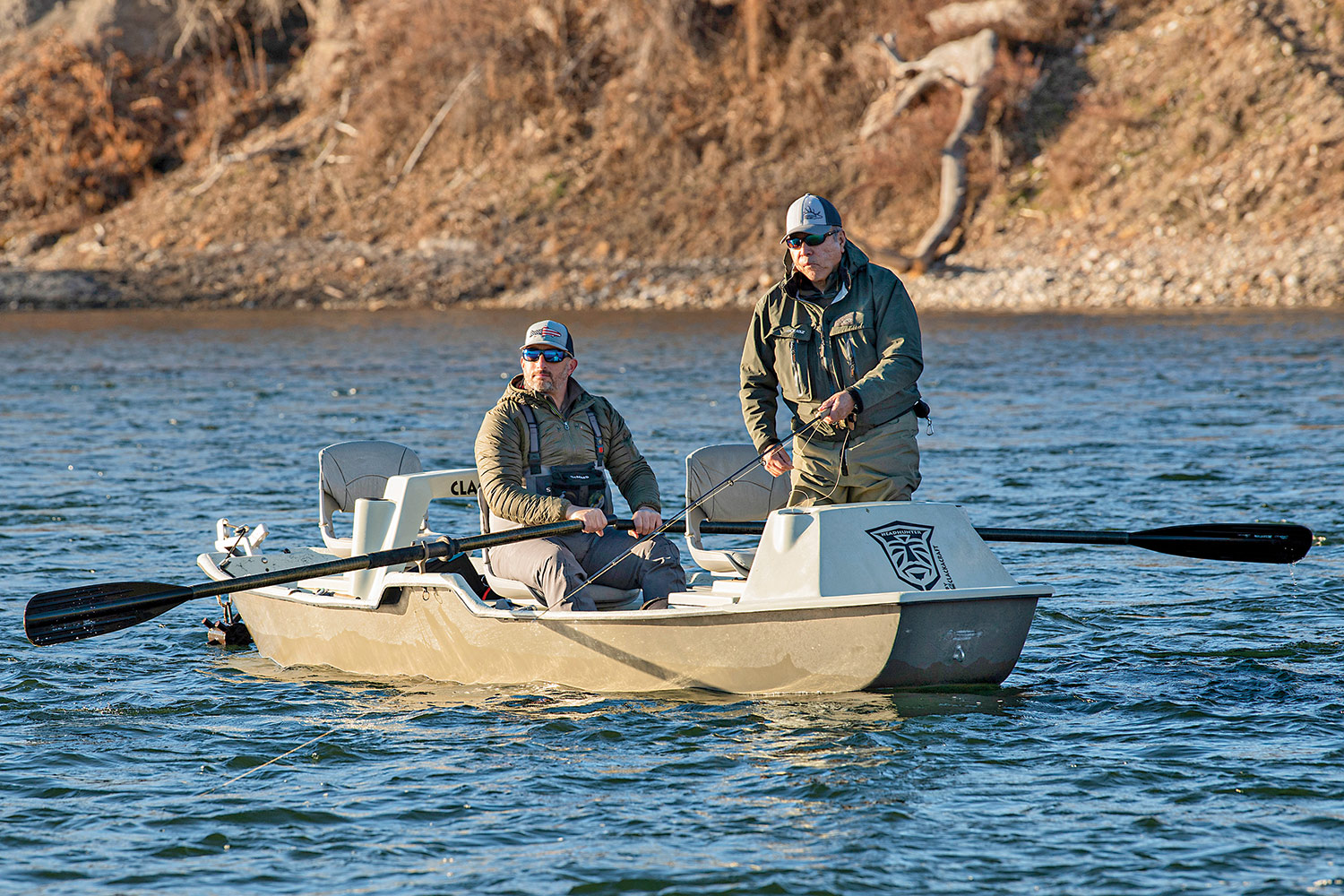
Dunking a gob of worms on a hook, Gonzalez would pull suckers, carp, and catfish from the water. “There were no trout down there. Just trash fish. The river was pretty dirty. You’d see oil slicks on the water from the refineries,” he says.
Gonzalez grew up poor. He was the eighth child of 16. His father, born in Mexico, was an orphan who fought in Pancho Villa’s guerrilla army before crossing the border in search of a better life. Like many migrants, he headed north to find work. He settled in Montana, where he met his wife and got a job with the Northern Pacific Railway.
Gonzalez inherited his father’s work ethic—“My dad used to say the only way to kill time was to work it to death”—and his wanderlust. Gonzalez would irrigate fields for farmers (earning $5 a day and getting paid in silver dollars, paper money being viewed with suspicion) and dream about the storied fishing of the Montana that was beyond his reach.
During his sophomore year in high school, in 1963, his best friend, Dave McClain, purchased a beater 1955 Dodge, which became their ticket to freedom. Gonzalez splurged on his first fly rod, a Ted Williams rod-and-reel combo from the Sears catalog for $20.
Together, he and McClain planned a journey to the real Yellowstone—the river in Yellowstone National Park—that he had read about in Outdoor Life and other magazines throughout his youth.
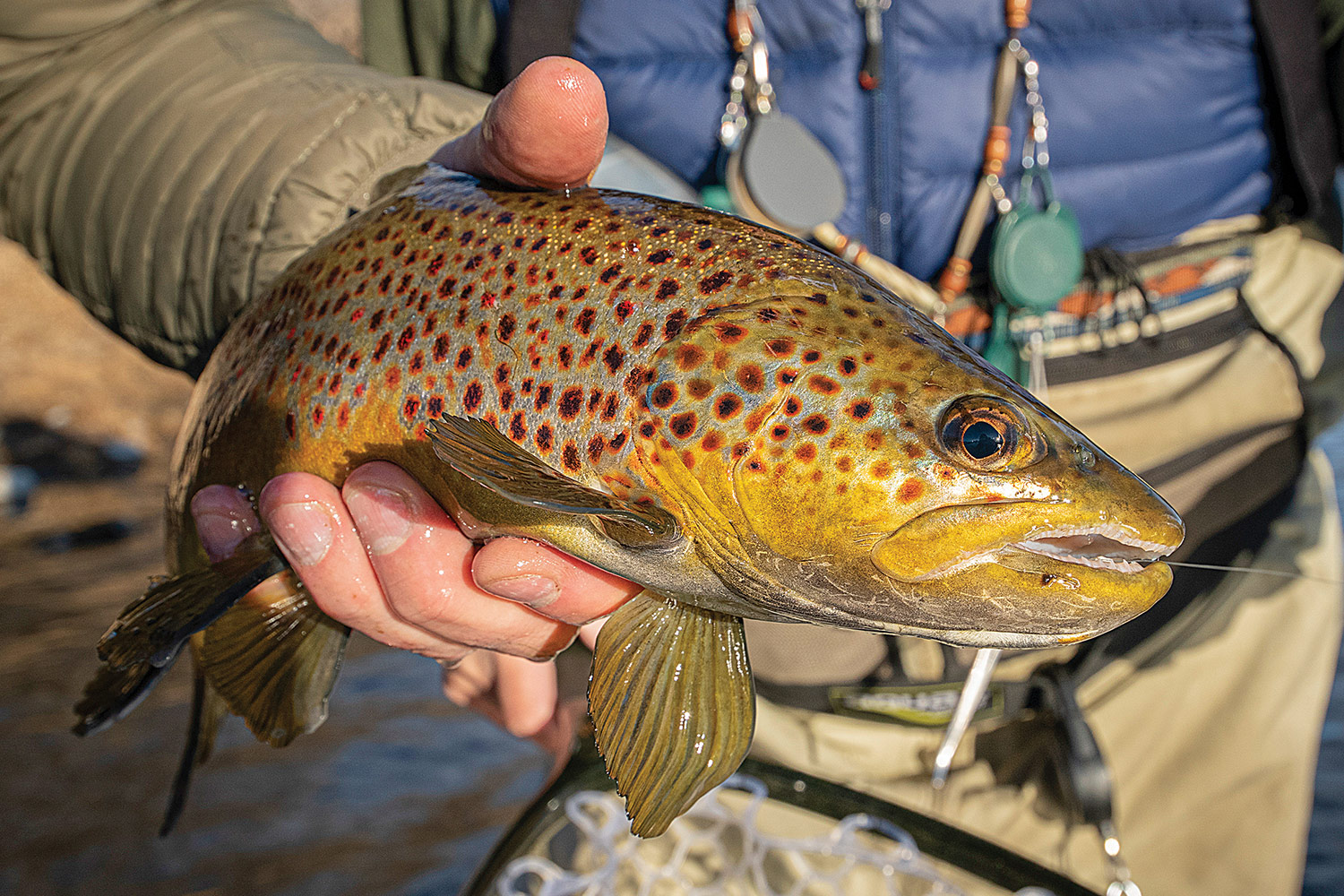
They pointed the Dodge west down the two-lane highway to visit Dan Bailey’s shop in Livingston, a mecca in the world of flyfishing. Before they got there, however, disaster struck. McClain accidentally closed his door on the tip of Gonzalez’s rod, snapping it off.
Gonzalez entered Bailey’s shop, broken rod in hand, hoping it could be fixed. Bailey looked at the rod and took pity on the poor teenage kid from eastern Montana.
“He pulled a new rod off the rack and told me I could borrow it for the trip,” Gonzalez says. “I purchased two flies—a Joe’s hopper and a black gnat. They were 50 cents apiece. I figured I owed him something. I didn’t even know how to tie a fishing knot, so I bit my leader back to where it would barely fit through the eye of the hook, and then tied an overhand knot to keep it from slipping off. I didn’t catch a lot of fish, but I didn’t lose those flies.”
Birth of the Bighorn
In 1961, construction began on the Yellowtail Dam in Fort Smith, Montana. The Bighorn originates in Wyoming’s Wind River Range, one of the most stunning alpine areas in the U.S., home to golden trout and native cutthroats. By the time the Horn wended its way across the Montana border, however, it was a muddy fishery of no particular note. The dam changed that. The cool waters that flowed from the bottom of the 525-foot structure, which was completed in 1967, gave birth to one of the finest blue-ribbon trout fisheries in North America.
During those early years, the Horn was one of the best-kept secrets in the fishing world. Much of that was due to geography. Fort Smith is the literal end of the road, a tiny outpost that even today has a population of just 160. After the dam was completed and the workers pulled out, it became a ghost town.
Gonzalez helped put the town and the river on the map, but not in any way he could have imagined. In 1978, he was fishing with friends on the river when a game warden with the Crow Indian Reservation, Wallace Red Star, brandishing a shotgun, arrested Gonzalez and confiscated the 5-pound rainbow they had caught.
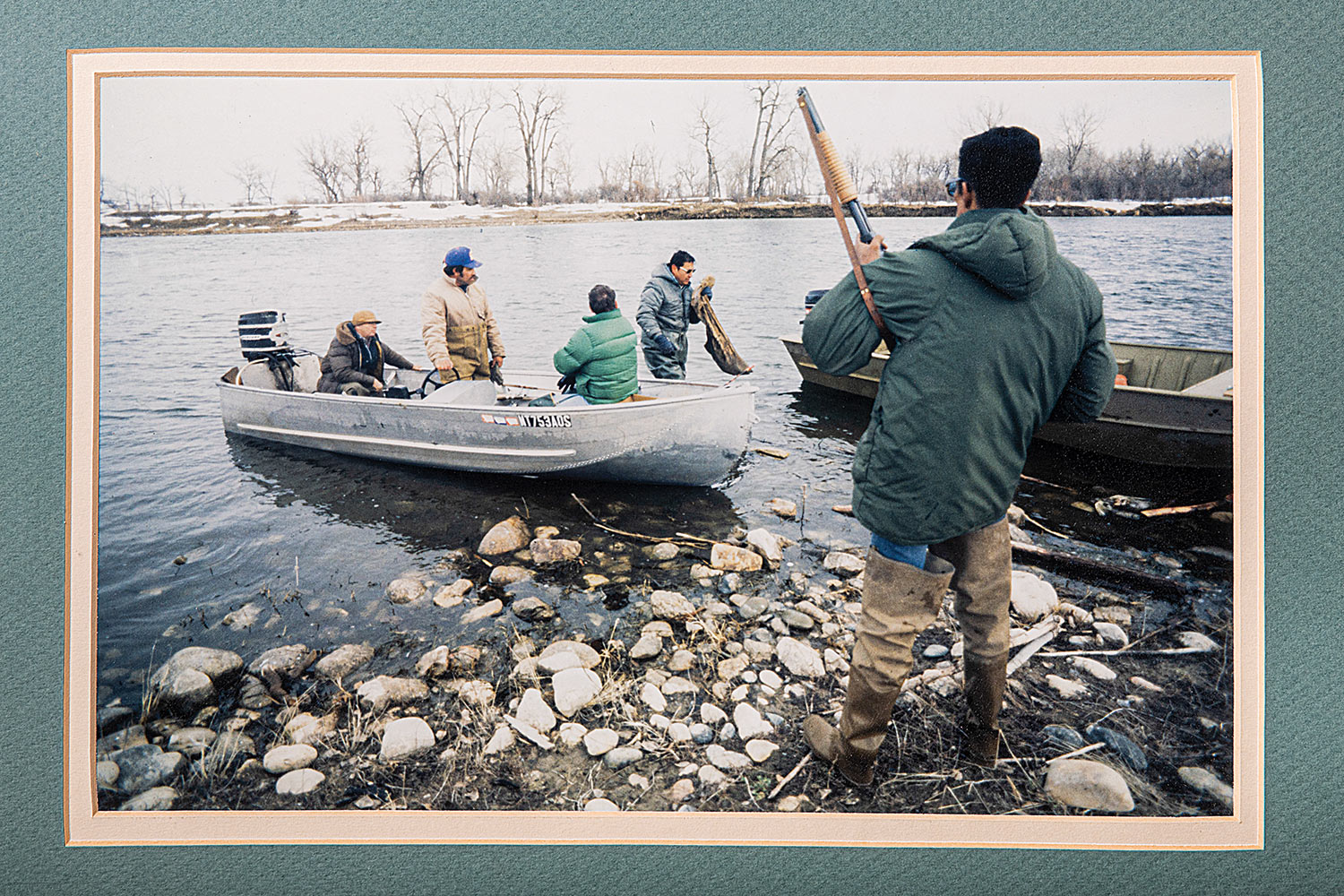
Much of the Bighorn winds through Crow country, and the tribe wanted to claim the water as its own. The arrest and subsequent court case made national headlines. It was closely followed throughout the West because it would have huge ramifications in determining who had sovereignty over rivers that crossed tribal lands.
The case went all the way to the Supreme Court, which decided in favor of the state of Montana. That ruling was upheld on appeal in the 9th Circuit Court. The Bighorn was officially public water open to everyone.
As the case played out, Montana state officials closed the river. “They were afraid someone was going to get killed,” Gonzalez says.
The state reopened the river in 1980, and that’s when the Bighorn exploded.
Wild West
Anglers flocked to the Horn in the ’80s. When the Madison, Missouri, and Yellowstone were blown out, guides would haul their clients to the eastern part of the state to drift the clear waters of the Bighorn.
The river is best thought of as a massive spring creek. It’s relatively shallow and up to 100 yards across in some spots. The riverbottom is home to huge numbers of scuds and larvae from midges, caddis, stones, and mayflies. During the frequent hatches, pods of fish will cruise the water sipping bugs, making for excellent sight-casting to large fish with tiny dries.
The fishing was so good, many of those anglers didn’t want to go anywhere else, much to the chagrin of the guides who introduced them to the river. A network of local guides cropped up to cater to these fishermen.
It was a chaotic, frontier-town scene. Guides were living out of trailers, and visiting anglers needed to make their own sleeping arrangements. The one restaurant in town wasn’t reliable.
On top of this, Fort Smith was developing a strong outlaw vibe. Its remoteness and minimal government oversight appealed to those looking to lie low. Coupled with an increasingly affluent crowd of sportsmen, some of whom had taken to landing their private planes on the one local airstrip, it was little surprise that a cocaine-fueled drug scene had found a foothold in southeast Montana. The era of Fort Sniff, as the town came to be known, had arrived.
Gonzalez, who had been hired on as a guide in one of the three fly shops in town, was among the few with meaningful experience on the river. The fact that he had fished the Horn since the beginning, in the late ’60s, and put in countless hours learning its secrets, contributed to his reputation for getting into trout when others struggled.
The Bighorn not only attracted well-heeled fishermen, it also became a destination for flyfishing celebrities. During this period, Gonzalez met and became friends with the likes of Flip Pallot, Trey Combs, Dave Whitlock, Lefty Kreh, and John Randolph.
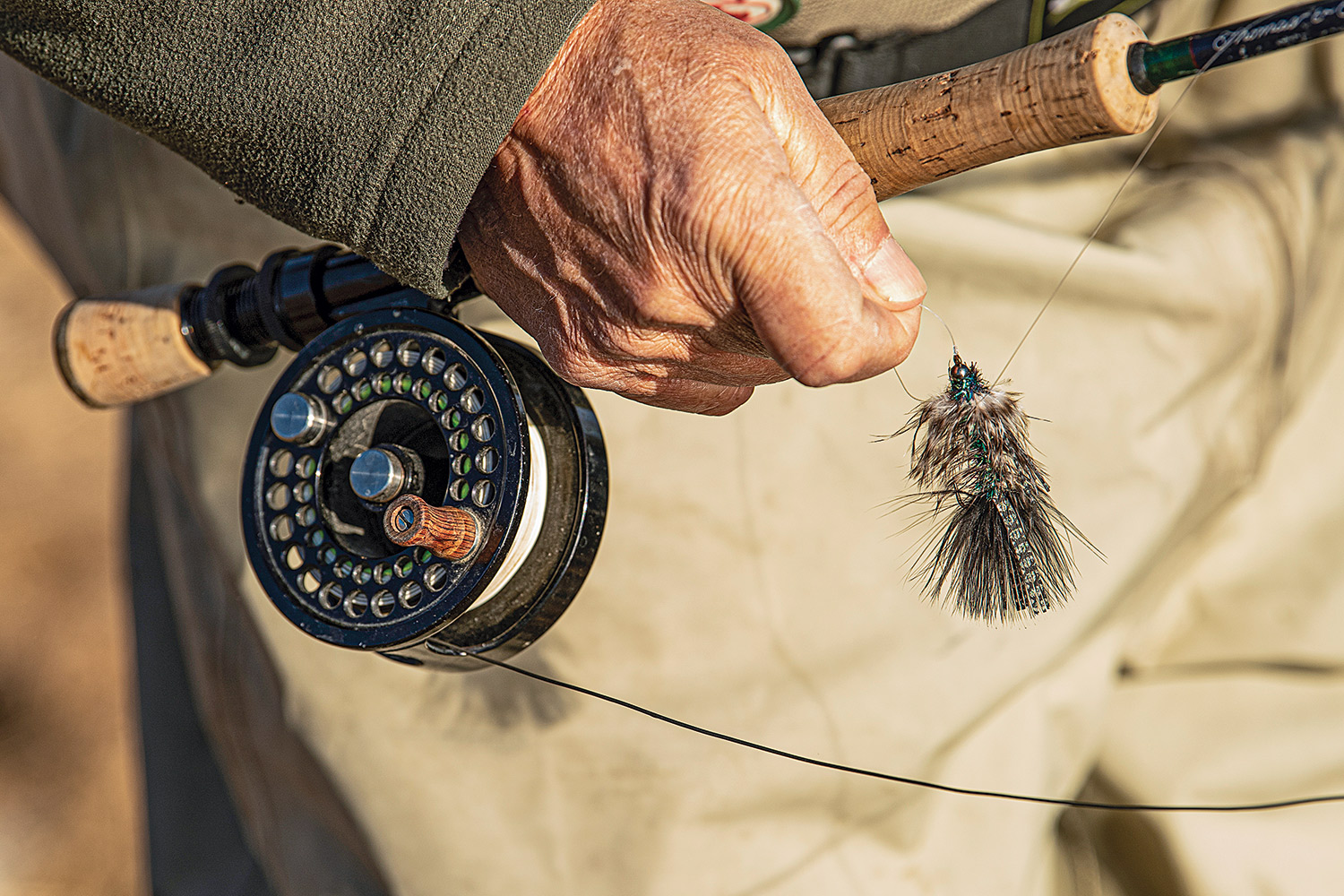
Through these connections and his growing clientele, Gonzalez could act on the wanderlust that had propelled him and Dave McClain to Dan Bailey’s fly shop all those years ago.
Trips to Alaska for salmon, followed by fishing for tarpon and bonefish in the Florida Keys, and Cuba for permit—-long before the travel embargo was lifted—gave him a new perspective. “It made me realize there was another world outside of Huntley, Montana,” he says.
Over the course of these international trips, he ended up taking more than 40 different species on the fly, everything from giant brook trout in the mountain lakes of Chile to yellowfin tuna off the coast of Mexico.
These experiences also solidified his vision for what was possible for Fort Smith and the Bighorn.
A Dream Realized
In 1989, Gonzalez purchased a 20-acre plot of land located 13 river miles below the spillway where the Bighorn begins. With the help of a friend with a D8 Cat, they bulldozed the ground to begin construction. The following year, the Bighorn River Lodge opened. It was the first all-inclusive operation on the river. The lodge filled up immediately.
It became a focal point not only for celebrities and wealthy anglers, but also the community and Crow tribal members. Gonzalez made a point of hiring Native Americans as fishing guides, and he created a pond on the property where he’d invite children from the surrounding farm towns to come fish for free on what were called Huck Finn Days.
Even today, when he goes to nearby places like Hardin, adults will stop to thank him for letting them fish at the lodge when they were kids.
Hiring Crow guides presented some challenges, though. For instance, owls are considered unlucky omens and harbingers of death among many Native American tribes, the Crow included. When an owl took up residence in one of the trees on the dirt road that led to the lodge, one of his guides refused to come to work for several days until the bird moved on.
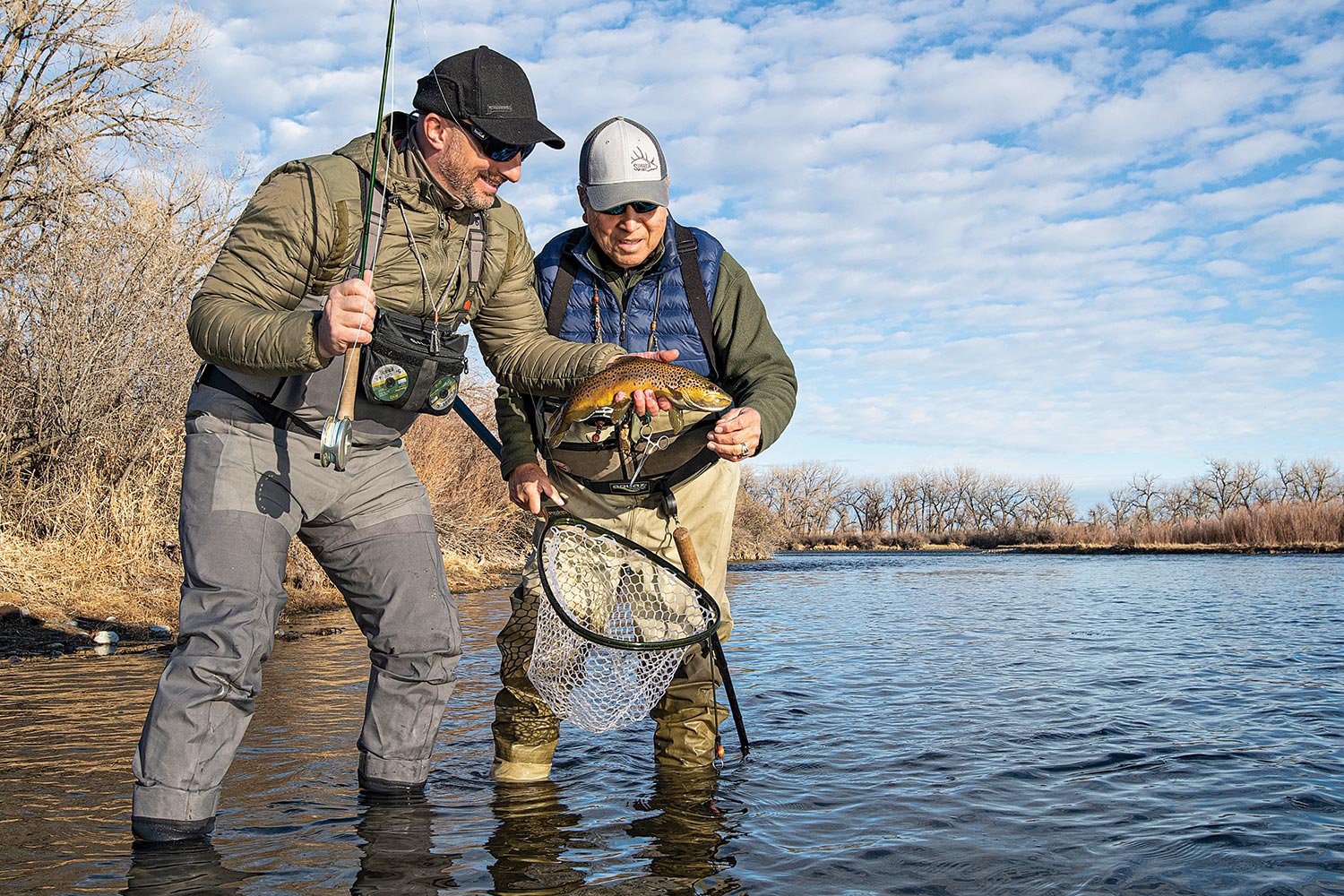
I met Gonzalez—always just Phil to me—several years ago. Dudley Lutton, a mutual friend and local fishing legend in southwest Montana, had known Phil for decades and arranged for the three of us to fish the Bighorn.
Phil had sold the lodge in 2008 and was living back in Huntley, but he maintained his personal fish camp in Fort Smith—a single-wide trailer in the middle of the small town.
A botched effort to reconstruct his knee left him hobbled, and he had a hard time getting in and out of a drift boat. Nonetheless, he was fired up to get on the water.
As we floated downstream, I listened to him dissect the river. Each twist, side channel, and run had decades’ worth of stories. He talked about the deep riffles that held trout in the summer that no one bothered to fish because they didn’t realize the big ’bows and browns were drawn to that oxygenated water. He showed me where Wallace Red Star leveled an 870 at him and placed him under arrest. He pointed out the shallows that offered the best sight-casting. He told me where he caught his largest fish on the river, a 10-pound slab brown that taped just under 30 inches.
That first trip turned into many others. Floating from the spillway at the Afterbay below the dam down to Three Mile, and then from Three Mile to the takeout at Mile 13 was our two-day ritual. The time of year never mattered. He was always game to fish.
We’ve been caught in storms and have had to fight our way to the takeout, rowing hard against gale-force winds blowing us upstream. One time, a sudden squall hit us. Within minutes, the temperature dropped 30 degrees, and sheets of icy rain and hail forced us off the water. We huddled on the bank in a thicket of Russian olives while I strung a tarp overhead with paracord to keep us from being beaten to death. Phil was shaking uncontrollably, and I thought for sure he was going to croak.
His passion for the Bighorn never flags, however. He attacks the river with the same enthusiasm he had for fishing when he discovered that rod and reel in the trunk of the old Buick.
“The Bighorn is my home water. Always has been. Always will be,” he says.
Winter in Montana can be a brutal affair. Just after New Year’s, cabin fever hit hard. I took a look at the forecast for Fort Smith and saw that the next few days were going to be cold but sunny and clear. I called Phil to see if he wanted to float for three days. “I thought you’d never ask,” he said.
Streamers fished slow can be especially effective in winter on the Horn. Phil had developed a pattern years ago with a friend of his, Pat Wright, that they dubbed the Gon-Wright. It isn’t bulky, but it contains two elements he believes are critical for eliciting strikes: eyes and a dark streak that imitates a fish’s lateral line.
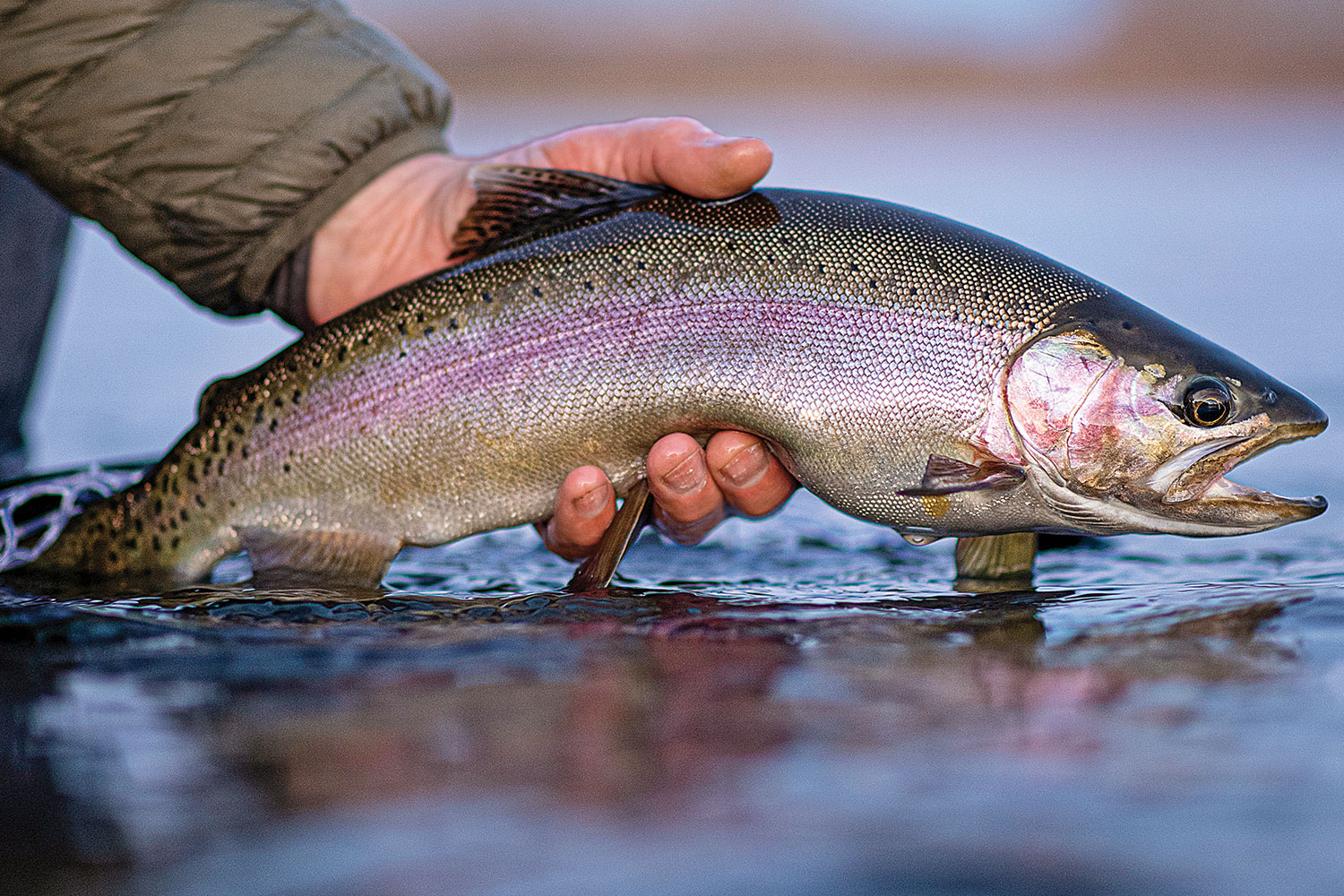
We started at the Afterbay, and I was on the oars. Not two minutes after launching, Phil said he got a strike. And then another. And another. But nothing was sticking. I couldn’t resist. “You can’t tell the difference between a rock and a fish,” I said. “You’re not hooking a damn thing.”
We pulled over to the bank and anchored, and I took out my 7-weight with a Gon-Wright tied to the leader. On the first cast, a small brown snapped at the fly and missed. I slowed the retrieve on the next cast and caught it. I hooked and landed another brown on the cast after that too.
I rolled a lot of good fish with the streamer the next day on the float from Three Mile to the takeout at Mile 13, but I had better luck with the size-18 scuds and sow bugs that are mainstays on the Horn.
I’ve fished with Phil long enough to know that part of what drives him to get on the river is that at his age, the day will come when he won’t be able to do it anymore.
But he’s not a selfish angler. Far from it. He’s one of the most generous people I’ve ever met. When I made plans to go to Belize and fish the flats for the first time, he not only gave me his box of saltwater flies, but also gifted me some of his prize Tabor reels and Thomas & Thomas saltwater rods. “I’ll never go again, so you might as well enjoy this stuff,” he told me.
At the end of the afternoon on our third day on the river, Phil told me to pull over as we drifted along a nondescript gravel bank. The river there didn’t look any different from the miles of water we had passed over, but he told me to wade out calf-deep and start working my nymphs.
I hooked into a fat brown, nearly 20 inches long, that bulldogged for 10 minutes before I could coax it to the bank and into Phil’s net. I offered up the spot, but he told me to keep fishing, saying he had had enough, which I knew was a lie.
I waded back out and stuck an 18-inch rainbow that jumped six times despite the cold temps of the January waters. I kept hooking fish, all strong and acrobatic, and infused with the fierce explosiveness that makes your heart skip a beat and is the drug that creates and sustains trout fanatics. I fished until the sun set behind the low brown hills that skirt the river, Phil leaning on his wading staff and looking on the whole time.
Read Next: “I’d Have to Bury You Out Here.” The New Mexico Stream Access Battle Is Far From Over
We rowed toward the takeout in the dark, the bright moon casting shadows over the water from the tall cottonwoods that lined the banks. Rafts of Canadas and goldeneyes lifted off in front of us by the dozens and hundreds, the sound of furious honking and whistling wings breaking the silence.
“Lovely, ain’t it,” the Godfather of the Bighorn said.
I couldn’t have agreed more.
This story originally ran in the Spring 2020 issue as “Godfather of the Bighorn.” Read more OL+ stories.
